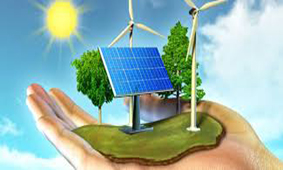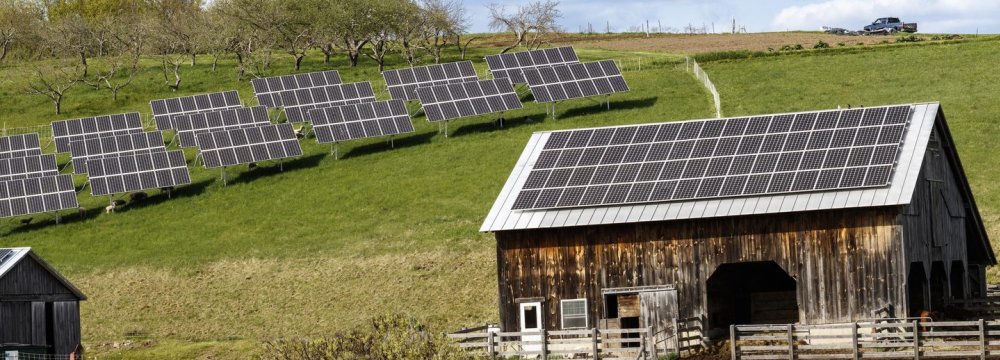
World Energy Needs Can Be Powered by Farmland

The concept of co-developing the same area of land for both solar photovoltaic power and conventional agriculture is known as agrivoltaics, Smart-energy.com reported.
“Our results indicate that there is a huge potential for solar and agriculture to work together to provide reliable energy,” said corresponding author Chad Higgins, an associate professor in OSU’s College of Agricultural Sciences.
“There’s an old adage that agriculture can overproduce anything. That’s what we found in electricity, too. It turns out that 8,000 years ago, farmers found the best places to harvest solar energy on Earth.”
“Solar panels are finicky,” he said. “Their efficiency drops the hotter the panels get. That barren land is hotter. Their productivity is less than what it could be per acre.”
For their study, OSU researchers analyzed power production data collected by Tesla, which has installed five large grid-tied, ground-mounted solar electric arrays on agricultural lands.
The researchers synchronized the Tesla information with data collected by microclimate research stations they installed at the array that recorded mean air temperature, relative humidity, wind speed, wind direction, soil moisture and incoming solar energy.
Based on those results, Elnaz Hassanpour Adeh, a recent PhD graduate from OSU’s water resources engineering program and co-author on the study, developed a model for photovoltaic efficiency as a function of air temperature, wind speed and relative humidity.



Trump weighs using $2 billion in CHIPS Act funding for critical minerals

Codelco cuts 2025 copper forecast after El Teniente mine collapse

Electra converts debt, launches $30M raise to jumpstart stalled cobalt refinery

Barrick’s Reko Diq in line for $410M ADB backing

Abcourt readies Sleeping Giant mill to pour first gold since 2014

Nevada army depot to serve as base for first US strategic minerals stockpile

SQM boosts lithium supply plans as prices flick higher

Viridis unveils 200Mt initial reserve for Brazil rare earth project

Tailings could meet much of US critical mineral demand – study

Kyrgyzstan kicks off underground gold mining at Kumtor

Kyrgyzstan kicks off underground gold mining at Kumtor

KoBold Metals granted lithium exploration rights in Congo

Freeport Indonesia to wrap up Gresik plant repairs by early September

Energy Fuels soars on Vulcan Elements partnership

Northern Dynasty sticks to proposal in battle to lift Pebble mine veto

Giustra-backed mining firm teams up with informal miners in Colombia

Critical Metals signs agreement to supply rare earth to US government-funded facility

China extends rare earth controls to imported material

Galan Lithium proceeds with $13M financing for Argentina project

Kyrgyzstan kicks off underground gold mining at Kumtor

Freeport Indonesia to wrap up Gresik plant repairs by early September

Energy Fuels soars on Vulcan Elements partnership

Northern Dynasty sticks to proposal in battle to lift Pebble mine veto

Giustra-backed mining firm teams up with informal miners in Colombia

Critical Metals signs agreement to supply rare earth to US government-funded facility

China extends rare earth controls to imported material

Galan Lithium proceeds with $13M financing for Argentina project

Silver price touches $39 as market weighs rate cut outlook

















